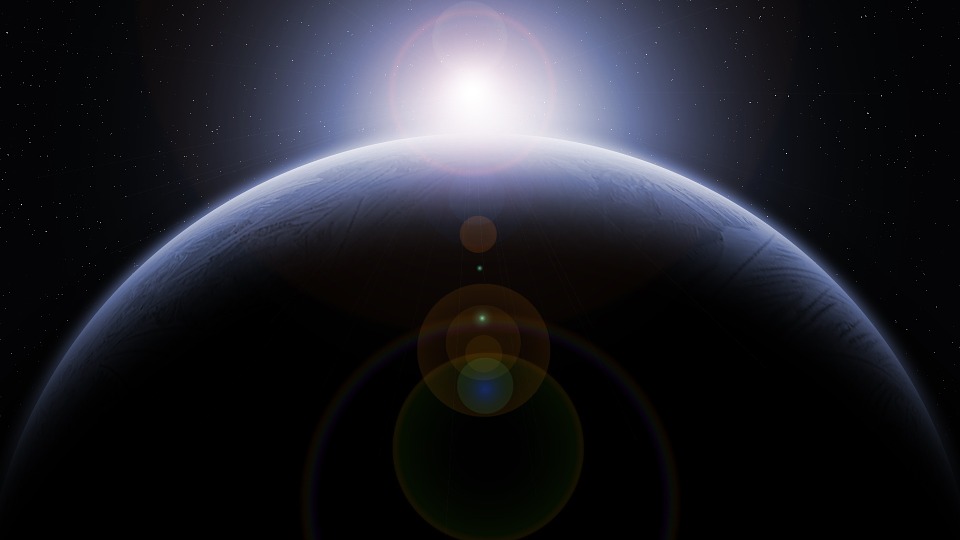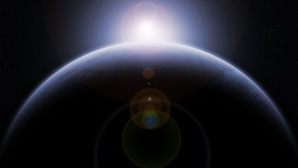Scientists came across a new exo-planet that they consider to be enveloped within a thin oxygen layer, while the planet seems to have a rocky surface. The said planet is like Venus and has been named as “GJ1132b”, the location of which lies thirty nine light-years away from our Earth.
The said planet first came into the astronomers’ notice in the year of 2015. Although, GJ1132b is cushioned within an oxygen layer, it possibly cannot “harbour life” given its “super hot” surface temperature that remains around “232 degrees Celsius”. From “Harvard-Smithsonian Centre for Astrophysics”, Laura Schaefer and her colleagues examined the GJ1132b to find out whether it was suitable for supporting life with water and other essential elements.
However, their study revealed that GJ1132b revolution path around its star lies in a close proximity of the latter. As a result, GJ1132b is exposed to heavy radiation of ultra-violet rays, whereby the chances of sustaining life on GJ1132b gets reduced. The explanation given by the researchers informs that UV rays “disintegrate” the H2O molecules into oxygen and hydrogen.
Hydrogen being a lighter element than Oxygen, it “escapes into the atmosphere”, while the latter gets left behind, whereby the researchers came to the conclusion of the possible presence of GJ1132b’s thin oxygen outer-layer. Nevertheless, researchers did not find any proof of water on the planet. In Schaefer’s words:
“On cooler planets, oxygen could be a sign of alien life and habitability. But on a hot planet like GJ 1132b, it’s a sign of the exact opposite – a planet that’s being baked and sterilised”.
Furthermore, scientists added that GJ1132b is the “first rocky planet with presence of oxygen” they came across; although they don’t have enough powerful telescopes to examine the GJ1132b’s surface, the next-gen telescopes like “James Webb Telescope and Giant Magellan” could provide better opportunities to examine the same.
References:
http://tecake.in/
The said planet first came into the astronomers’ notice in the year of 2015. Although, GJ1132b is cushioned within an oxygen layer, it possibly cannot “harbour life” given its “super hot” surface temperature that remains around “232 degrees Celsius”. From “Harvard-Smithsonian Centre for Astrophysics”, Laura Schaefer and her colleagues examined the GJ1132b to find out whether it was suitable for supporting life with water and other essential elements.
However, their study revealed that GJ1132b revolution path around its star lies in a close proximity of the latter. As a result, GJ1132b is exposed to heavy radiation of ultra-violet rays, whereby the chances of sustaining life on GJ1132b gets reduced. The explanation given by the researchers informs that UV rays “disintegrate” the H2O molecules into oxygen and hydrogen.
Hydrogen being a lighter element than Oxygen, it “escapes into the atmosphere”, while the latter gets left behind, whereby the researchers came to the conclusion of the possible presence of GJ1132b’s thin oxygen outer-layer. Nevertheless, researchers did not find any proof of water on the planet. In Schaefer’s words:
“On cooler planets, oxygen could be a sign of alien life and habitability. But on a hot planet like GJ 1132b, it’s a sign of the exact opposite – a planet that’s being baked and sterilised”.
Furthermore, scientists added that GJ1132b is the “first rocky planet with presence of oxygen” they came across; although they don’t have enough powerful telescopes to examine the GJ1132b’s surface, the next-gen telescopes like “James Webb Telescope and Giant Magellan” could provide better opportunities to examine the same.
References:
http://tecake.in/






